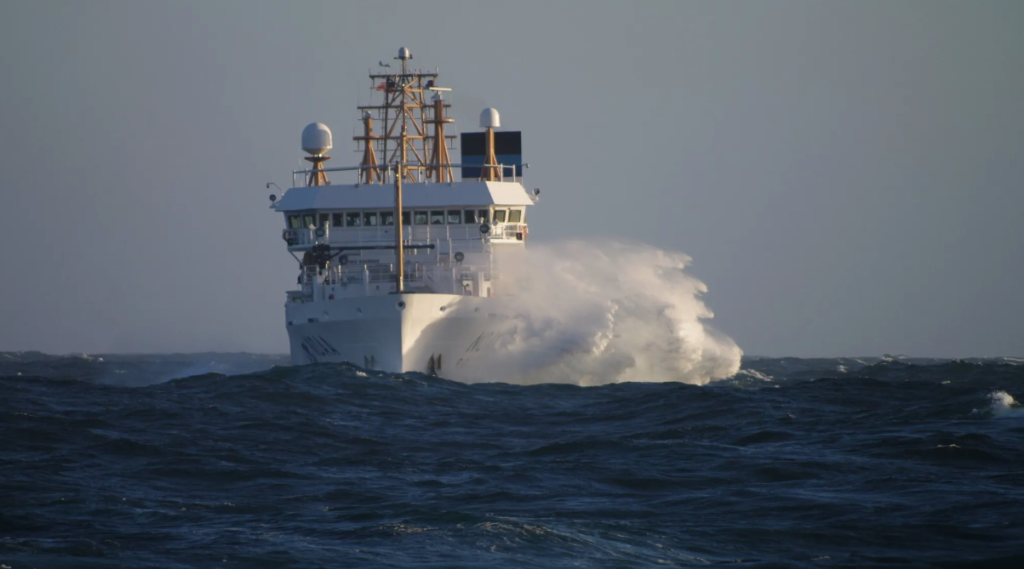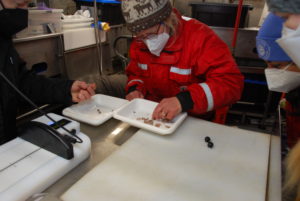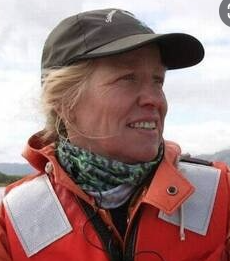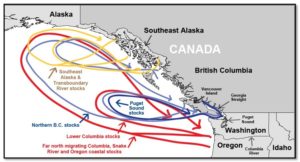
By JOSHUA PARTLOW/The Washington Post
During a typical fall, almost a million chum salmon pour into Alaska’s Yukon River, a torrent of wild fish that has sustained the economy and Indigenous culture in the far north for generations. Last year, that run collapsed, with salmon trickling upstream at a 10th of normal levels, forcing the state to airlift frozen fish from other regions to feed the population.
About 400 miles to the south, in Bristol Bay, the world’s largest sockeye salmon fishery set a record last year, with more than 66 million salmon returning to the rivers in the watershed. That total is expected to be broken again this year.
Salmon in the Pacific Ocean face dramatically different fates from one their beginnings in one river system to the next. As the planet warms, scientists say changes in ocean conditions are helping drive these wild swings and collapses of key stocks. These North Pacific fish account for most of the world’s wild-caught salmon, and their survival has implications for economies and cultures around the Pacific Rim.
During her three decades as a government scientist, as climate change has intensified, Laurie Weitkamp has watched these fluctuations in salmon numbers become bigger and the models that predict how many salmon will return from sea become more unreliable.

“Salmon will go out, in what we think is a really good ocean, and then it collapses,” said Weitkamp, a fisheries biologist with the National Oceanic and Atmospheric Administration based in Newport. “They don’t come back.”
The pressures salmon face in their home rivers, and their experience in coastal waters, are well documented. But less is known about what they endure on the high seas. It is there where some species of salmon spend several years before returning to spawn — and where Weitkamp says many are dying as marine heat waves driven by climate change are altering their ecosystem.
“Once they leave that coastal area, that’s where they enter the black box,” she said.
The largest-ever salmon research expedition in the North Pacific — known as the 2022 Pan-Pacific High Seas Expedition — aims to shed light on that stage in the salmon life cycle. Five ships from the United States, Canada and Russia have been collecting salmon samples and studying ocean conditions across about a million square miles.
Researchers hope to map where salmon from different rivers spend their winter months — when less food is available and they are particularly vulnerable — and detect signs of competition between salmon species following marine heat waves in recent years.
“We’ve seen dramatic or severe declines in many of our salmon stocks,” said Jackie King, chief scientist on the Canadian research ship the Sir John Franklin. “There is a high mortality rate in the ocean, and that seems to be one of the toughest things for us to estimate.”
In Canada, the nearly 10 million sockeye salmon that normally return to the Fraser River plummeted to a record low of 293,000 in 2020, before rebounding slightly last year. Russians have protested salmon declines off its east coast in recent years. Scientists from those countries, as well as Japan and South Korea, are also participating to study salmon populations that intermingle in the North Pacific.
Russia’s invasion of Ukraine, however, has disrupted this international effort. Shortly before Russia’s research ship was scheduled to leave Vladivostok, the Biden administration pulled off the four American scientists who were slated to be onboard the Tinro. The U.S. government also blocked the Tinro from operating in America’s exclusive economic zone waters, which extend some 200 miles south of the Alaska’s Aleutian Islands, where the Russian vessel had planned to do some of its sampling.
Russia is now expected to complete only half of about 80 locations on the research grid that it had intended to study.
“When you have holes in the grid, it’s never good,” said Alexei Pinchuk, a biological oceanography professor at the University of Alaska Fairbanks, who was aboard NOAA’s Newport-based ship, the Bell M. Shimada. “Of course it will affect our confidence in the results.”
Newport scientist leads U.S. ship
Weitkamp served as the lead scientist on the Shimada, a 209-foot research vessel that has returned to Newport from 38 days at sea. The 40-person crew, which included 14 scientists, took on winds that reached 50 knots and waves up to 15 feet high as they traveled more than 6,000 miles.

“I’m still rocking and rolling,” she said the day after the Shimada docked at the NOAA Marine Operations Center-Pacific in Newport.
During the trip, scientists dragged a trawl net about 100 feet wide for an hour at a time before bringing on board the salmon or other species caught in the net. On the high seas, salmon spread out more than when they swim in coastal waters or rivers. The most they ever caught in one of these trawls was 45 fish. A large circular device comprised of a cluster of water collection tubes would sample the water column’s temperature, salinity and other characteristics at various depths down to more than 3,000 feet. Then the ship would motor for several hours to the next research location, 60 nautical miles away.
On board, the scientists preserved samples of salmon muscles, blood, scales, gonads, livers and the ear bones that reveal age lines like the rings of a tree. They examined the salmon’s stomachs to gauge what they’re eating and collected DNA from the seawater to see what other organisms were present — and absent.
Salmon experts know enough about the genetics of different salmon stocks around the Pacific Rim that they can catch a fish in the open ocean and know exactly where it came from.
“The genetics have just exploded,” Weitkamp said. “We can distinguish 10 separate populations in the Columbia River alone.”
Many of the chum salmon that the Shimada scientists caught appeared skinny and malnourished, fish that Weitkamp described as “the survivors.” In coming months, laboratory analysis will determine if the fish were enduring the normal difficulties of winter or were starving and eating their internal organs.
“The reason why this cruise was so exciting is there is very, very little data on the winter ecology in the Gulf of Alaska,” said Pinchuk, who focuses on zooplankton, the tiny marine animals drifting on ocean currents that become prey for salmon and other fish.

Effect of warming ocean
This year’s research mission expands on earlier surveys done in the Gulf of Alaska in 2019 and 2020. Shimada scientists identified some general contrasts to prior trips: The water was colder than in previous years, and salmon tended to be found further south. While coho salmon were the second-most abundant species caught in 2019, this year so far there were fewer.

With these expeditions, scientists hope to explain how salmon will survive in a warming Pacific. Starting in 2013, a mass of unusually warm water lingered off the West Coast of the United States. It lasted three years, spread across roughly 1,000 square miles and became known as the “blob.” A second Pacific blob emerged in 2019.
Teasing out the reasons the connection between a warming planet and why salmon may be dying is not easy. Salmon face many predators at every stage in their life cycle. Climate change damages the streams where they are hatched, and not just by raising the water temperature: Droughts alter stream flow, forest fires destroy shoreline habitat, and mudslides silt up rivers. The changing conditions also reshape life for communities of zooplankton, krill, squid and other fish salmon rely on for prey in the ocean.
For coldblooded salmon, heat increases metabolic rates. This increased metabolism can also reduce the caloric content of their prey, making them a less nourishing meal. So warmer water makes salmon need more food, at times when less may be available.
“We know that that marine heat really disrupted the food web,” said Ed Farley of the Alaska Fisheries Science Center, who was on the Shimada. “We think that was one of the reasons we saw drastic declines of returns, especially around the Gulf of Alaska, after the first marine heat wave.”
Climate modeling suggests marine heat waves will occur more often as atmosphere and the oceans continue to warm.
Salmon in the Pacific are still a “survival story,” Farley said. But these dramatic crashes in salmon populations are an ominous sign. Climate change, in his opinion, “drove a lot of the mortality that we’re seeing.”
“If we’re going to really understand the future, we need to understand how climate’s going to be impacting these fish,” he said.



